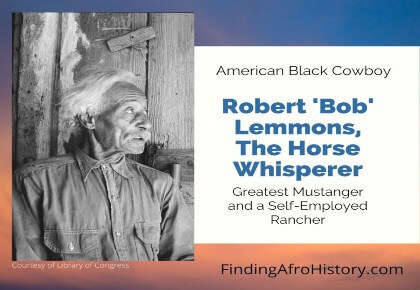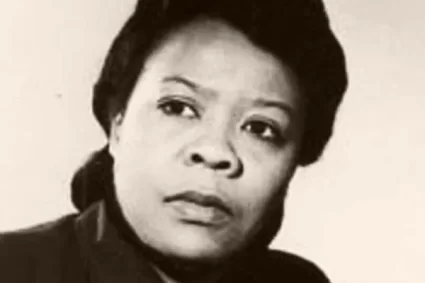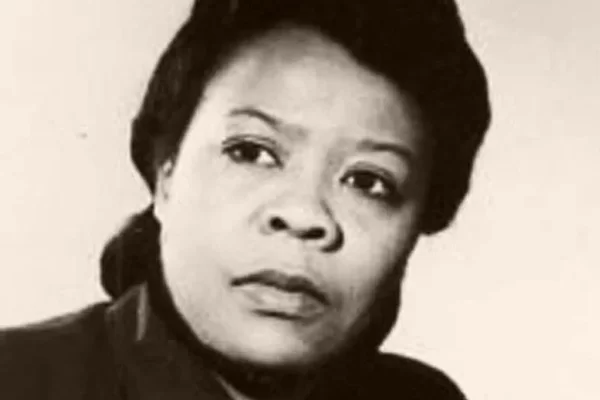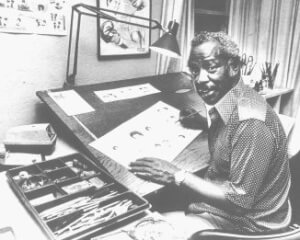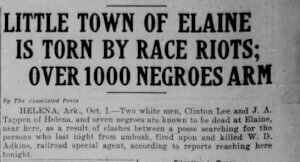Journey Through Recent Stories 🔎
Moorie Turner | First Black Cartoonist
Mr. Turner Introduces First Positive Children’s Show Moorie Turner, Comic Strip Creator of ‘Wee Pals’, was the first black cartoonist in national syndication. As a […]
Tech & InnovationMr. Turner Introduces First Positive Children’s Show
Moorie Turner, Comic Strip Creator of ‘Wee Pals’, was the first black cartoonist in national syndication. As a Blackman, Turner sketched the first Black Comic Strip called ‘Wee Pals,’ which debuted in newspapers in Chicago in 1965.
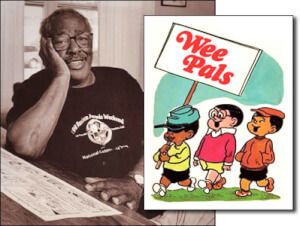
![]() As a child, were you into comic strips? Do you remember the Saturday morning cartoon KID POWER, which aired on ABC in 1972? Well, Kid Power was based on Moorie Turner’s comic strip. Rankin/Bass, the creators of Rudolph the Red-Nosed Reindeer, produced the show for television.
As a child, were you into comic strips? Do you remember the Saturday morning cartoon KID POWER, which aired on ABC in 1972? Well, Kid Power was based on Moorie Turner’s comic strip. Rankin/Bass, the creators of Rudolph the Red-Nosed Reindeer, produced the show for television.
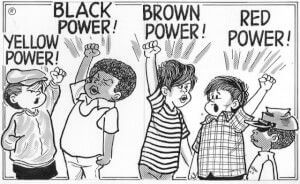
According to an article posted by KQED News, “Mr. Turner’s comic strip “Wee Pals,” featuring childhood playmates who were white, black, Asian, Hispanic, and Jewish (joined in later years by a girl in a wheelchair and a deaf girl), was considered subversive in 1965 when a major syndicate first offered it to newspapers.
Only two or three of the hundreds of newspapers in the syndicate picked it up. By early 1968, there were five.
But of the many changes that occurred after the assassination of the Rev. Dr. Martin Luther King Jr. that April and the urban uprisings it started, some of the first appeared in the nation’s funny papers (“A Passing: Oakland’s Morrie Turner, Creator of ‘Wee Pals’ Comic Strip,” 2014).”
A Passing: Oakland’s Morrie Turner, Creator of “Wee Pals” Comic Strip. (2014, January 29). KQED. https://www.kqed.org/news/124677/a-passing-oaklands-morrie-turner-creator-of-wee-pals-comic-strip
French Code Noir | Death by Religion
French Code Noir 1685: Death by Religion (Black Codes) In 1635, a Frenchman established a settlement on the island of Martinique. Then, in 1658, King […]
Slave CodesFrench Code Noir 1685: Death by Religion (Black Codes)
In 1635, a Frenchman established a settlement on the island of Martinique. Then, in 1658, King Louis XIV of France took control. He would use his power to decree the French Code Noir or Black Codes to administer terror over Black slaves.
King Louis XIV anxiously wanted to convert the Black/Afrikans to Christianity. He and his advisors placed strict limitations on the enslaved inhabitants of the island. They believed that the use of force was the best way to separate Afrikans from their spiritual beliefs.
Eventually, the endgame was to not only indoctrinate the Negro into Christianity but ensure they preserved the Christian religion until their deaths😱.
By 1685, Afrikan slavery under Le Code Noir was adopted. King Louis XIV’s edict or laws to police and control African slaves spread throughout the French-controlled territories of the Caribbean. Interestingly enough, the first article of Le Code Noir (Black Codes) references the expulsion of Jews from the French islands.
Why are Jews mentioned in a set of laws designed to control the Afrikan slaves? Who were these Jews, dark-skinned Hellenized Israelites, or white-skinned Ashkenazi? A Little food for thought🤔.
The edict of Le Code Noir ordered Black Afrikans to be disciplined in Christianity. The condition of slavery would also pass through the mother, NOT the father, ensuring a steady supply of Afrikan slave labor.
The French Le Code Noir 1685 Excerpts:
Article II: All the slaves who will be in our Islands will be baptized and instructed in the Catholic, Apostolic, and Roman religions. We charge the planters who will buy newly arrived Negres to inform the Governor and Intendant of the said islands within a week at the latest or face a discretionary fine, these [officials] will give the necessary orders to have them instructed and baptized within an appropriate time.
Article III: We forbid any public exercise of any religion other than the Catholic, Apostolic, and Roman; we wish that the offenders be punished as rebels and disobedient to our orders. We prohibit all congregations for this end, which we declare “conventicles,” illicit and seditious. Subject to the same penalty which will be levied even against masters who allow or tolerate them among their slaves.
Article IV: No overseers will be given charge of Negres who do not profess the Catholic, Apostolic, and Roman religions. On pain of confiscation of the said Negres, from the masters who had given this charge to them, and of discretionary punishment of the overseers who accepted the said charge.
Holy Days to Holy Ground
Article VI: We charge all our subjects, whatever their status and condition, to observe Sundays and holidays that are kept by our subjects of the Catholic, Apostolic, and Roman religions. We forbid them to work or to make their slaves work on these days. From the hour of midnight until the other midnight, either in agriculture, manufacturing of sugar, or all other works, on pain of fine and discretionary punishment of the masters and confiscation of the sugar, and of the said slaves who will be caught by our officers in their work.
Article XIV: Masters are held to put into Holy Ground in cemeteries so designated [as will] their baptized slaves; and those who die without having received baptism will be buried at night in some field near the place where they died.
A Slavery Greater Than Physical Harm?
Why would one person or group of people feel driven to abolish another’s spiritual belief system? So compelled to rid the Afrikan slaves of their GOD the punishment for not converting to Christianity was death.
The involuntary relocation of the Afrikan Negro from his homeland was traumatizing enough. To gain complete and unchallenged control of the enslaved nations of Negro people, Code Noir was enforced. Yet, one thing hindered France’s direct rule over them, and that was their spiritual belief system. Nonetheless, stripping the people of their ELOHIM would give France the authority over these people it so desired.
Who did King Louis XIV of France really fear? Did he fear the Negro as an individual or a spiritually unified nation of Negroes?
Did France’s Le Code Noir meet the requirements for ‘Death by Religion ⚔️?’ You Decide🤔 in the comments below.
When you throw a stone at YAH, it lands right on top of your head🎯
(Afrikan Proverb)
Discover More:
Source: 1685 edict of France, Le Code Noir, The Black Code
https://s3.wp.wsu.edu/uploads/sites/1205/2016/02/code-noir.pdf
Elaine Massacre of 1919 Race Riots
The Men of the Church Pass Out More Than Hymnal Books The Elaine Massacre of 1919 is one of about three dozen race riots that […]
African American History EventsThe Men of the Church Pass Out More Than Hymnal Books
The Elaine Massacre of 1919 is one of about three dozen race riots that happened across the United States during the Red Summer of 1919—so-called because blood flowed in the streets. The violence started around 11 pm on September 30, 1919, and by October 7, 1919, had slowed down.
At the root of white-on-black violence; tense race relations, white hatred stemming from competing for jobs with ex-slaves or Black Americans, and awards and accommodations received by Black soldiers fighting in WWI under French command. They despised seeing Black men proudly adorned in uniform.
History lists the Elaine Massacre of 1919 as the bloodiest mass killing in the history of Black America. To this day, what happened in Elaine from September 30 – October 2 remains sketchy. Even the death count of 5-20, or up to 300 as documented in history, is debatable. What triggered the blood-thirsty terror that besieged the land?
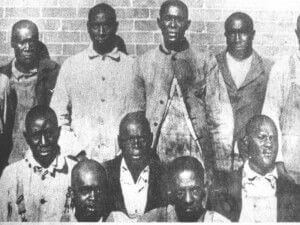
ARE YOU READY…
African American sharecroppers living in Elaine decided they would no longer tolerate white landowners cheating them out of rightfully earned profits. They took steps to demand fair market value for cotton crops.
Between the hours of 11 pm on September 30, 1919, and late into the evening on October 2, 1919, the military and caravans of white mobs traveled as far away as forty-miles to Elaine to take part in a ‘nigger hunt.’ (Yeah, that’s correct if we’re going to tell the story call it what it is). Resentful racists on a bloody quest to save the white race from a make-believe black uprising.
After slavery ended in 1865, working as freed laborers, a good deal of ex-slaves remained on the plantations. These African American tenant farmers provided skills necessary to plow, plant, weed, and harvest crops. As sharecroppers, they also lived on the plantation they farmed. In exchange for living on the land, the plantation owner or landlord kept as much as a third of the crops.
Besides receiving a third of the crop as payment for rent, white landlords and store owners offered credit to tenant farmers’ for supplies, tools, and other materials to grow crops. This was not an act of kindness. Bookkeeping practices falsified transactions. The inaccurate dollar amount recorded as money owed deliberately kept tenant farmers in debt.
This deceptive practice prevented Tenant Farmers, aka Sharecroppers, from saving enough money of their own to eventually move away, buy their own land, or provide basic needs for their families.
Sharecroppers Organize
Even though some of your ancestors couldn’t read or write, nothing was wrong with their memory or ability to run numbers in their heads. In doing so, they realized they were being taken advantage of.
Recognizing “sneaky practices” the sharecroppers organized into the Progressive Farmers and Household Union of America (PFHUA). Members paid dues. They also hired an attorney and demanded monies owed to them for cotton crop production, including an itemized account of charges.
On the night of September 30, 1919, in Hoop Spur, a town located three miles north of Elaine, members of the union met inside the Hoop Spur church to discuss union business.
Aware of the black sharecroppers’ intent to sue white landowners, a group of uninvited white men with local sheriff’s officers surrounded the church and harassed those inside the building.
Shots were fired into the church, they set the building on fire. Church security took action by firing back, killing one, wounding another, and running the others away.
The white men who caused all of this spent the middle of the night, the sky dark as dirt, running around the community, causing fear and panic that a black revolution is brewing. The truth of the matter, the surviving unwelcomed racist couldn’t believe that black men (church security) grabbed their weapons and bust back at them.
Terrified to their core, they continued well into the next day recruiting white posses to help them retaliate.
Elaine Overrun by Swarms of Wingless Human Locusts
By daylight on October 1, instead of going somewhere to sit down and think about their poor choices or take a nap, the surviving white men involved in the shoot-out continued spreading lies about what truly happened at the church. The Mayor of Elaine sent multiple telegram messages to the Governor of Arkansas begging for reinforcements.
When the Mayor didn’t receive an immediate response from the Governor’s office, he supported and allowed fake news to spread throughout the area. These horrible lies enticed hordes of angry white posses to go to Elaine and declare war on innocent African Americans. (Hmm).
For two days, the Mayor and sheriff welcomed heavily armed white racist men into Elaine. They set up camp and began hunting down Black residents like deer. They tracked African Americans through the woods and swamps like rabbits or alligators. African Americans were beaten, lynched, and gunned down on-site, including children.
By nightfall, on October 1, the Governor of Arkansas responds to the Mayor and deploys troops to the town of Elaine. Traveling with them by train, the Governor and a unit of combat war veterans from Camp Pike—a military post outside of Little Rock, arrived in Elaine on October 2; 400 troops from the third infantry division, 150 from the fourth infantry division, and 12 machine gun units.
Already in Elaine, vehicles, and truckloads of white men, about 600 from Helena, Arkansas, and another combined 1,000 from nearby communities including an invasion of white supremacists from Mississippi. (That’s right, you do the math)
They descended on the African American residents of Elaine, Arkansas, like a plague of locusts. The initial crime, organizing as a union to gain a fair share of profits on the cotton they produced!
Elaine Massacre of 1919 a Mystery?
The United States military denied participation by any of its soldiers in the butcher and the execution of African Americans in Elaine. Prior to the year 2000, writers of history believed them. According to a phenomenal account of the events detailed in the book Blood in Their Eyes: “The Elaine Massacre of 1919 revised edition” evidence may suggest otherwise.
Inconsistent military reports together with both white and black witness accounts paint a different picture. Written statements or court-prepared affidavits give details about the beginning hours of the Elaine Massacre.

If you take nothing else from reading “Blood in Their Eyes,” you MUST question the African American death toll of 856 mentioned in Chapter 3: “The Boys from Camp Pike.” Although presented as questionable, the journalist who first reported the staggering death toll gained the attention of others. The evidence for determining its accuracy or not is even more interesting. (You Decide).
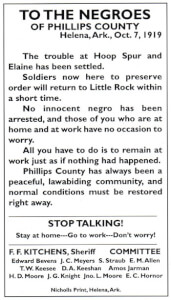
Learn More:
Quick Read about the racial tension during 1919
https://www.facingsouth.org/2020/10/descendants-arkansas-elaine-massacre-victims-push-restorative-justice
Sources:
Mitchell, Brian K.., Lancaster, Guy., Stockley, Grif. Blood in Their Eyes: The Elaine Massacre of 1919. United States: University of Arkansas Press, 2020.
Elaine Massacre of 1919. (2020, November 18). Encyclopedia of Arkansas. https://encyclopediaofarkansas.net/entries/elaine-massacre-of-1919-1102/ (accessed February 26, 2021)
The Waco News Tribune. (1919, October 2). Newspapers.Com. https://www.newspapers.com/clip/21405643/the-waco-news-tribune/


